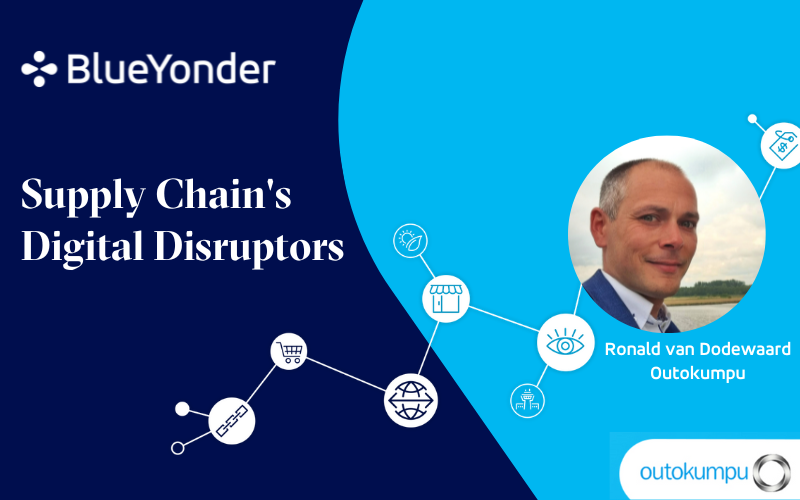Transportation and Sustainability: How Can They Work Together?
Recently, Ronald van Dodewaard, Vice President Logistics at Outokumpu shared his thoughts on the company’s work with integrating sustainability into their transportation functions, including how Blue Yonder’s Transportation Management System (TMS) has enabled them to develop a more environmentally-friendly transportation program. Outokumpu’s vision is to be their customers’ first choice in the delivery of sustainable stainless steel, and the company is continuously seeking new ways to further improve its efficiency and to minimize the environmental impacts of its operations and supply chain. You can watch the conversation with Ronald van Dodewaard in this Blue Yonder Live “Supply Chain’s Digital Disruptors” session.
What was the initial driver for your work?
It goes back to when we started transforming our transportation functions, but then our drivers shifted over the years. Initially, our main driver was cost, but then we realized that our initiatives to reduce costs contributed to making our operations more sustainable. I think it is about a modal shift, changing from one form of transportation to another. We started using barging and rail transport instead of trucking, as well as reducing empty kilometres and increasing the actual payload of trucks. Of course, all of this was supported by Blue Yonder’s TMS.
What did you find most difficult to achieve and how did you tackle it?
Initially, reducing costs was a challenge, but doing business is all about the costs and making it as efficient and sustainable as possible. I think the biggest surprise for us was that we could do both at the same time. So, while we were reducing costs, we were also making the company more sustainable by, for example, reducing the number of trucks and using rail transport. Basically, I think that was already a motivation for our team to see that reducing costs and sustainability can go hand-in-hand.
Did the corporate objectives around sustainability change as a result of the efforts that you and your team were making?
We changed our vision and mission within the company and decided that we wanted to be our customers’ first choice in the delivery of sustainable stainless steel. Our focus on sustainability changed of course as well, and I think that goes for most companies in Europe. Reducing costs and increasing efficiency is definitely still crucial, but sustainability is now equally important for us. From a corporate point of view, we have a clear ambition to reduce our carbon footprint and not only in production where we have our biggest emissions, but in our transport functions as well. Every segment will be checked to see how we can reduce our carbon footprint across the entire company.
What was the most satisfying aspect of the work you and your team undertook?
The changes we managed to achieve as a team, as well as the implementation of the latest version of Blue Yonder’s TMS, where the most satisfying aspects. Using the functionalities that are provided with the system has made it easier for us as a team to maintain our processes and achieve the changes and targets we were aiming for in relation to sustainability and cost reduction.
Did your team become more focused on sustainability as a result of their work?
When it comes to sustainability, transportation is not always the front runner, but we have started the journey by, for example, choosing rail, vessels, and barges instead of trucking. Sustainability has definitely become more important within the business, and everybody is aware of it which is also reflected in our daily operations. In addition, what we see more and more is that some alternative fuels are being used for trucks, so that is of course also something that we are looking into.
Your role is quite demanding, what drives you?
The world is constantly changing, especially within transport in Europe. We have had so many different disruptions that have affected our logistics, including Brexit, floodings in Germany last year, COVID-19, the conflict in Ukraine, and now the energy crisis hitting Europe. It is one disruption to another. What is motivating me and the team is to overcome these disruptions and still being able to ship products across Europe.
Do you want to share what Outokumpu’s next step is on this journey – what lies ahead?
We hope to make further progress with our sustainability initiatives, including making sure that we are loading our trucks and trains as much as possible. We need less trucks at the end. That is our quickest win and biggest saving. We will continue our modal shift and focus on rail transport, even though it is difficult with all the disruptions. Also, looking into alternative fuels. We will focus on using LNG instead of heavy fuel oil. So, that is what we are aiming for, increasing the payloads, modal shift, and alternative fuels.

